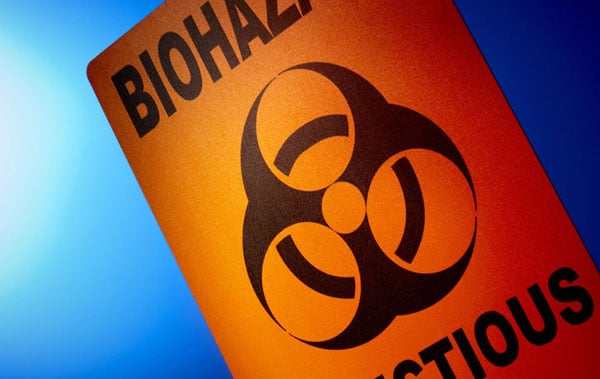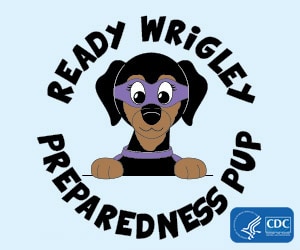Biological Threats

Biologic Threats and Children
A biologic threat is an infectious disease with the potential to spread and cause an outbreak.
Infectious diseases are illnesses caused by germs (such as bacteria and viruses). Some infectious diseases require close contact between two people, like when people speak to each other. Other infectious diseases can only spread by germs carried in air, water, food, or soil, or by biting insects or by animals.
Biologic threats may spread naturally, as in a worldwide flu outbreak or be released intentionally in a bioterrorism attack. Anthrax was intentionally released in 2001 to cause harm.
Why Children are Vulnerable to Biologic Threats
Children are more likely to get sick and have a more severe illness from a biologic threat compared to healthy adults for several reasons. First, children’s immune systems are not fully developed, which means they can more easily get an infection and may have a harder time fighting off the infection. Second, germs can spread rapidly because children typically have frequent, close contact with other children or family members and they put their hands in their mouths more often than adults. Third, children may not understand how to protect themselves or understand the importance of safety measures. For instance, they may not follow recommendations to prevent the spread of germs, like wearing a facemask or proper hand washing.

Protecting Children from Biologic Threats
Treatments for biologic threats vary depending on the germs that are causing the illness. However, there are ways to protect your family in the event of an infectious disease emergency:
- Prepare an emergency kit. In the event of widespread illness, it is possible that services and facilities in the community – like restaurants, public transportation, and banks – will close temporarily. Similar to preparedness for other types of emergencies, it is important that you have essential supplies at home, including at least a 3-day supply of water and food that will not spoil, as well as any medicines that your family members need daily.
- Stay informed. In an emergency, seek out information early and often. Public health authorities will communicate the things you can do to protect yourself and your family. The Centers for Disease Control and Prevention (CDC) will provide information through television, radio, the Internet, or social media pages, such as Twitter and Facebook.
- Know your family’s medical history. It may be necessary to take antibiotics, receive vaccines, or take other medicines to treat an infection. Healthcare professionals want to know about your family’s health and any medical problems you and your relatives have had in the past. You can help by keeping a written medical history for your family that includes the following items:
- Medical conditions
- Allergies
- Medicines that family members are taking
- Each child’s weight
Additional Resources
Emergency Preparedness and Response
Fact sheets on specific bioterrorism agents
Flu Information for Parents with Young Children
In the Event of Bioterrorism: Protecting Families from Deadly Diseasesexternal icon
